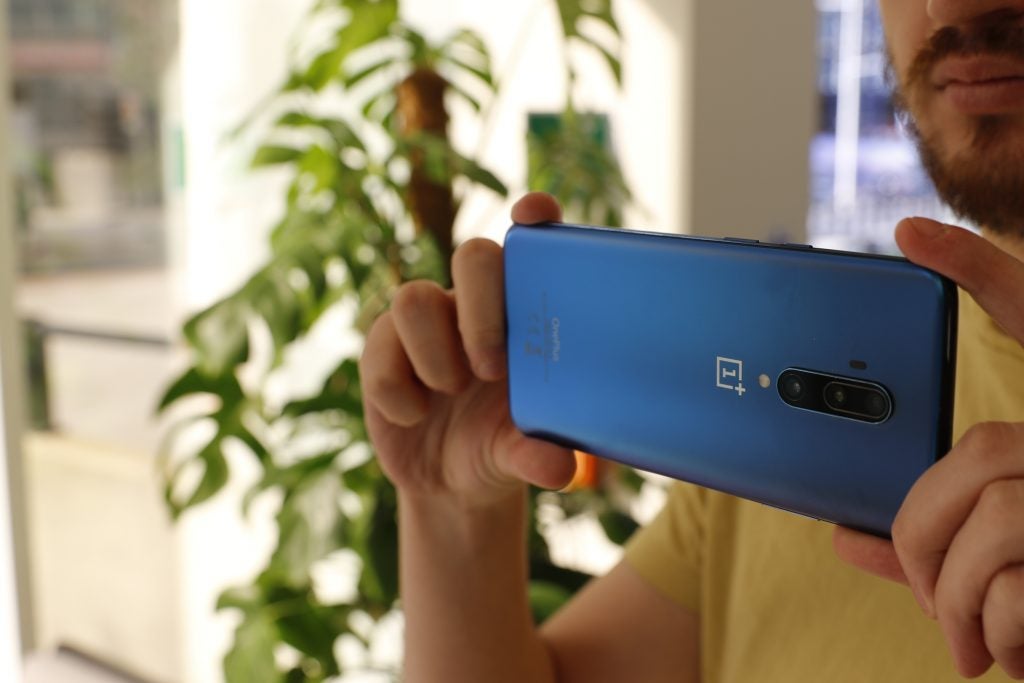OnePlus 7T Pro vs OnePlus 7T

Are you considering a OnePlus as your next phone but are unsure about whether the new OnePlus 7T or OnePlus 7T Pro will be a better bet?
You’re not alone. With OnePlus having released more phones than you can shake a stick at this year, each with fairly similar specs, it’s no easy task trying to figure out the differences between models.
Read our reviews of the OnePlus 8 and OnePlus 8 Pro
Here to help, we’ve created a definitive guide detailing the differences between the OnePlus 7T and OnePlus 7T Pro, making it quick and easy for you to pick the right phone for your budget and needs.
Related: Best phone 2019

OnePlus 7T Pro vs OnePlus 7T – Specs and design
When it comes to core specs, the OnePlus 7T and OnePlus 7T Pro are fairly similar. Both are powered by Qualcomm’s latest Snapdragon 855 Plus CPU, supported by 8GB of RAM. In addition, both come with the same 16-megapixel front camera sensor and feature similar triple-sensor rear camera setups.
The difference is that the regular 7T has a circular rear camera housing and uses a 12-megapixel secondary telephoto lens. The Pro uses an 8-megapixel secondary telephoto sensor.
Technically, too, the phones diverge. The Pro has a higher resolution, QHD+ Fluid AMOLED screen. The regular OnePlus 7T has a smaller, 6.55in FHD+ Fluid AMOLED screen. The Fluid AMOLED panel remains a key selling point for both phones, giving them a higher than average 90Hz refresh rate. It makes the screen feel significantly smoother to use than most competing 60Hz phone displays.
The more obvious differences upfront relate to the design of the two phones. For starters, the OnePlus 7T Pro has a pop-up front camera. This means that its larger 6.67in screen is completely notch-free. The 7T has a Huawei P30-style dew-drop notch that houses the front camera.
In addition, the OnePlus 7T Pro’s screen is made using 2.5D glass. This means the glass wraps around the phone’s sides, giving it a curved feel. Whether this is a positive will come down to personal taste. It definitely makes the Pro model look nicer, but we feel it also makes it easier to drop and damage.
The pop-up camera makes watching movies and playing games more pleasant on the Pro, but it also makes using the face unlock feature a little laborious, especially when it works so well on the regular 7T.
You can see a full breakdown of the two phones’ specs in the table below.
| Spec | OnePlus 7T Pro | OnePlus 7T |
| Screen | 6.67in QHD+ Fluid AMOLED | 6.55in FHD+ Fluid AMOLED |
| CPU | Snapdragon 855 Plus | Snapdragon 855 Plus |
| RAM | 8GB | 8GB |
| Storage | 256GB | 128/256GB |
| Front camera | 16-megapixel | 16-megapixel |
| Rear camera | Triple sensor: 48-megapixel main, 8-megapixel telephoto, 16-megapixel ultra-wide | Triple sensor: 48-megapixel main,12-megapixel telephoto and 16-megapixel ultra-wide |
| Battery | 4085mAh, Warp Charge 30T | 3800mAh, Warp Charge 30T |
OnePlus 7T Pro vs OnePlus 7T – Price
OnePlus announced at the launch event that the OnePlus 7T and OnePlus 7T Pro would be priced at £549 and £699 respectively. The original OnePlus 7 and OnePlus 7 Pro were priced at £499 and £649 at launch, meaning the refreshed versions have had a £50 price bump.
Related: Best Android phone 2019

OnePlus 7T Pro vs OnePlus 7T – Release date
Both the OnePlus 7T Pro and OnePlus 7T are available for pre-order now – with both phones being released on October 17.
Early verdict
The OnePlus 7T Pro offers a modest update on the OnePlus 7 Pro. This, plus the fact that OnePlus has chosen to include a number of key features – such as Fluid AMOLED and a third camera sensor – to the regular OnePlus 7T, makes it a much closer race between the two handsets than we’ve seen with previous outings. Unless OnePlus radically drops the price of the Pro model, we believe the regular 7T will be the better option of the two for most buyers.


